While Dominik Szoboszlai is only the third Hungarian player to feature for Liverpool’s first team, an unlikely agreement saw 14 countrymen brought in from his former club. Here is the story of Liverpool and MTK Budapest.
Luxembourg has not often been able to describe itself as a command post of footballing potential – as a nation who have produced very few renowned stars; though Robby Langers did draw level with Gary Lineker in the ranking for the Ballon d’Or in 1989 – but holding the European U17 Championship in 2006 saw the continental mediator play host to a number of stars of the future.
Toby Alderweireld and Axel Witsel represented Belgium, Ron-Robert Zieler, Sven Bender, Lars Bender, Stefan Reinartz, Toni Kroos and Marko Marin all travelled in Germany’s colours, Stevan Jovetic shone as Serbia and Montenegro’s figurehead, Sergio Asenjo, Cesar Azpilicueta, Ignacio Camacho and Bojan Krkic turned out for Spain and Miralem Pjanic, prior to his commitment to Bosnia and Herzegovina, was the jewel in the host’s crown.
The tournament was a kingmaker for some of Europe’s soon-to-be luminaries, and Jozsef Both’s Hungary were desperate to impose themselves on the same stage.
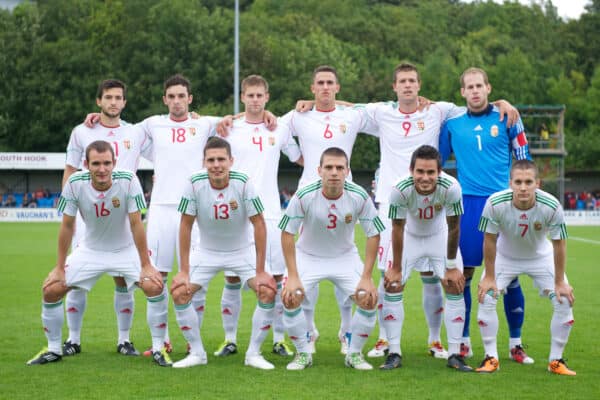
Peter Gulacsi (No. 1) with Hungary U21s vs. Wales in 2011
“I think there are two or three players in our team who are in the European elite for this age, which makes me very happy,” Both explained during his side’s time in Luxembourg, “and is a very good thing for Hungarian football in general.”
Though Hungary departed the tournament after the group stage, falling short in losing to both Russia and Spain, their performances most certainly caught the eye – with their 4-0 win over the hosts at the Stade John Grun in Mondorf-les-Bains serving as their highlight of the summer.
Russia ran out eventual winners, while Kroos was named Golden Player, coinciding with his move from Hansa Rostock to Bayern Munich, with scouts from around Europe looking to harvest the best talent on show.
At that time Rafa Benitez – along with chief scout Frank McParland – was formulating plans to extend his recruitment reach further, in his bid to establish Liverpool as the continent’s premier club for youth talent, and the performances of the Hungary U17s clearly caught the Spaniard’s eye.
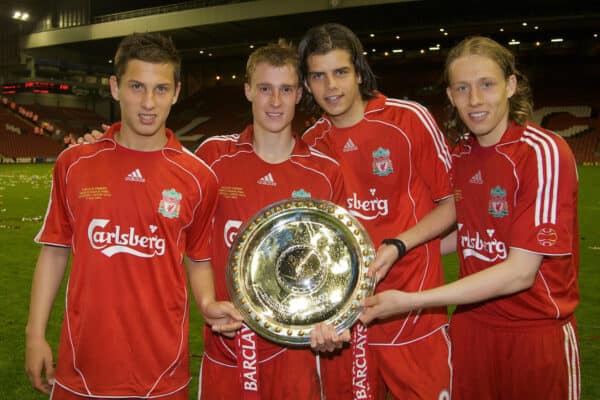
Krisztian Nemeth (left) after winning with Premier Reserve League playoff final in 2008
Three players from Both’s squad made the switch to Merseyside in 2007, with goalkeeper Peter Gulacsi joining on loan and strikers Andras Simon and Kristian Nemeth arriving on permanent deals, as part of a formal partnership with MTK Budapest.
Laszlo Domonyai, MTK’s general director, described the deal as “a milestone not only for MTK but for the whole of Hungarian football,” with Liverpool providing a platform for the country’s young talent to thrive, as well as financial support for MTK’s Karoly Sandor academy.
For the Reds, this was only the beginning in a heavy influx.
Zsolt Poloskei followed the trio on a season-long loan in 2008, with Gulacsi’s move also becoming permanent that year; Attila Abu, Patrik Poor, Krisztian Adorjan, Patrik Vass and Peter Horvath all spent time on trial with the club in 2009, with Poor securing a two-year loan and Adorjan signing a long-term contract.
Adam Hajdu joined on loan in 2010, before a fallow year in 2011; trials for Kristof Polgar and Kevin Korozman saw the former join the Reds’ academy in 2012; and in 2013, both Patrik Demjen and Balint Vogyicska also spent time training at the club’s Kirkby youth facility.
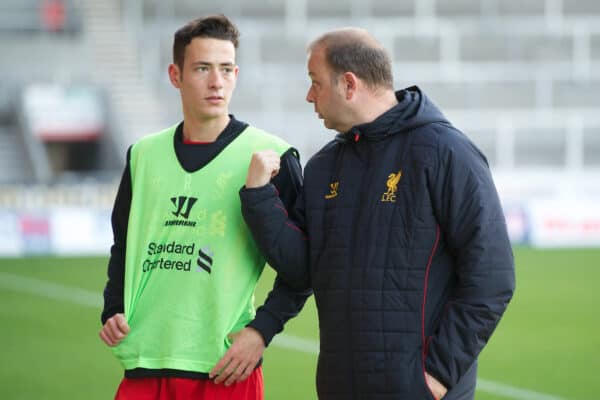
Krisztian Adorjan with reserve team head coach Rodolfo Borrell in 2012
In just seven years, Liverpool brought in 14 young Hungarian players either on trial, on loan or on permanent deals, while another seven joined Oldham Athletic on loan in 2009 as part of a co-operative agreement with the League One side that allowed the Reds to take a closer look with a view to securing further signings.
It was a bold move by Benitez, who largely looked to Europe rather than Merseyside to flesh out his academy squad, but it still begged the question: why did Liverpool look to Hungary?
“MTK had far and above the best academy in Hungary at the time. In about 2001 the owner Gabor Varszegi, one of Hungary’s richest men, sensed an opportunity to make a lot of money by producing talented youngsters so MTK could go far in Europe,” Hungarian football journalist Tomasz Mortimer explained in 2017, with 14 of Both’s 18-man squad at the U17 Euros hailing from the Budapest club.
“I think when that looked like it was impossible his focus changed and he thought the best way to recoup the money was to prostitute the club and sell its best players, which he did.”
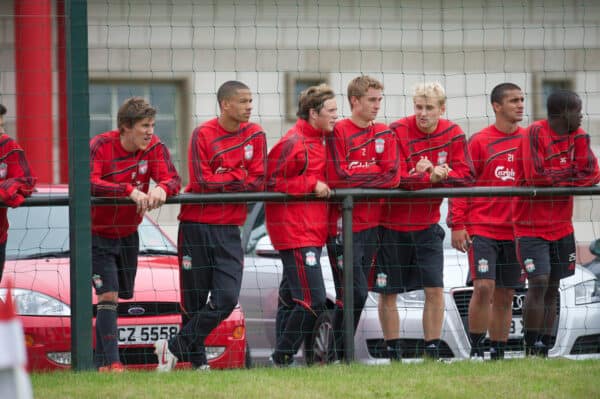
Zsolt Poloskei watching Liverpool U18s at Kirkby in 2009
On a basic level, while Varszegi’s ambition did not result in European glory for his club, it did provide Benitez with the ideal feeder club with which to boost his youth ranks – though, as Mortimer continued, the impact this exodus of talent had on MTK was hugely detrimental.
“By the time Varszegi left in 2011, the club got relegated, three years after winning the league,” Mortimer explained, serving as a damning indictment of the modern football owner’s overriding interest in financial prosperity over on-field success – since Liverpool’s agreement with MTK began, they have won the Nemzeti Bajnoksag just once.
Meanwhile, none of the five players to join the Reds on permanent deals remain with the club, with Gulacsi (RB Leipzig), Simon (Csakvar), Nemeth (back at MTK), Adorjan (Budapest Honved) and Polgar (Gyirmot) all plying their trade elsewhere without having made a single appearance for the Liverpool first team.
In 2010, Liverpool reached a similar agreement with KRC Genk, with the intention of sending young players out to Belgium to gain first-team experience and, more importantly, provide a middle ground for African and South American players to perform while securing work permits for the UK.
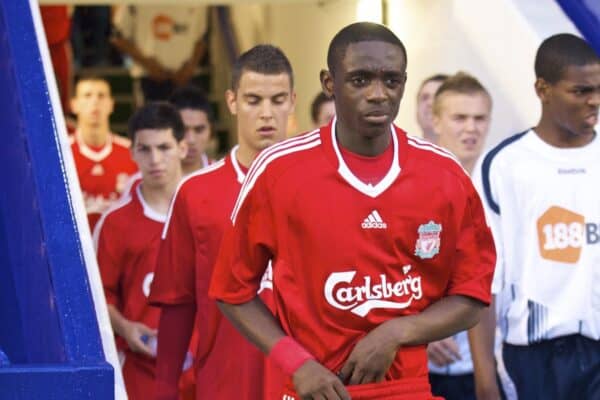
Chris Mavinga playing for Liverpool reserves vs. Bolton in 2009
But over the four-year deal, just one player spent time at the Luminus Arena – Congolese left-back Chris Mavinga – and while they didn’t have first option on Genk’s players, the likes of Thibaut Courtois, Kevin de Bruyne and Christian Benteke all left the club during that period with Liverpool seemingly holding no interest.
Examples at other clubs in the Premier League, such as Man United with their long-standing partnership with Royal Antwerp and Chelsea with Vitesse Arnhem, do highlight the possible virtues of negotiating deals with feeder clubs, but they remain few and far between.
More recently, the rise of multi-club ownership has replaced the traditional feeder club model, with Brighton using their association with Union SG to provide experience for Kauro Mitoma and Simon Adingra on loan.
Man City are part of a City Football Group which includes 11 other clubs, with connections to Spain, France, Italy, Belgium, Australia, the United States, Brazil, India, Uruguay, China and Japan.
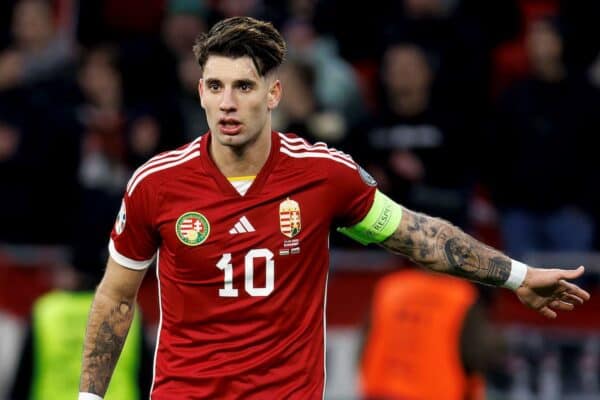
Liverpool have taken a more informal approach under Fenway Sports Group, having gained precious little from their flirtation with Hungary and, though not by their design, inflicting critical damage to the nation’s footballing infrastructure – Hungary have not qualified for a World Cup since 1986, despite the promise of a Magical Magyars revival in 2006.
It is only now, with Szoboszlai as captain and the country’s most expensive player following his £60 million move to Liverpool, that hopes are rekindling.
He stands apart from Istvan Kozma and Adam Bogdan before him as the first of his countrymen to truly establish himself as a key player at Anfield – as despite the good intentions of Benitez and McParland back in 2007, Liverpool’s Hungarian invasion proved a miserable failure.
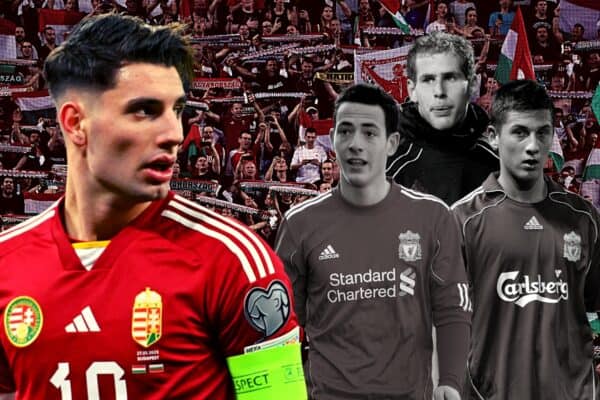



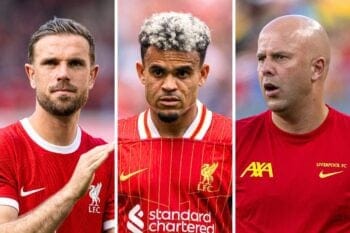
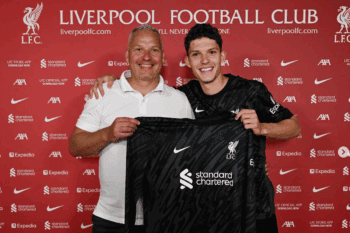






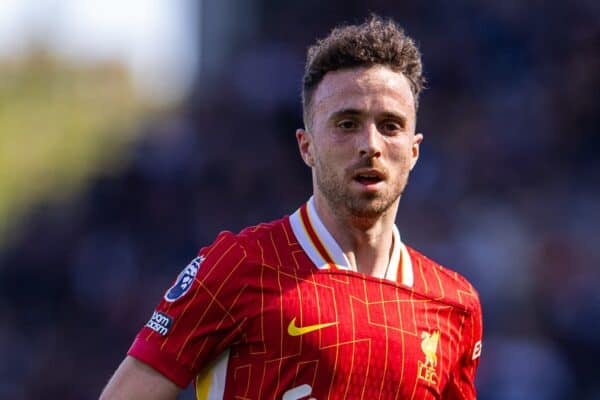
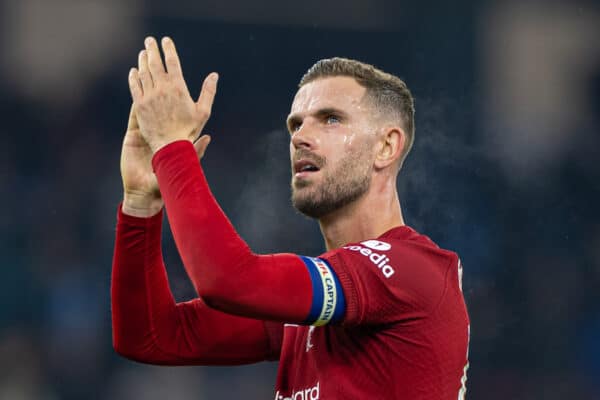



Fan Comments